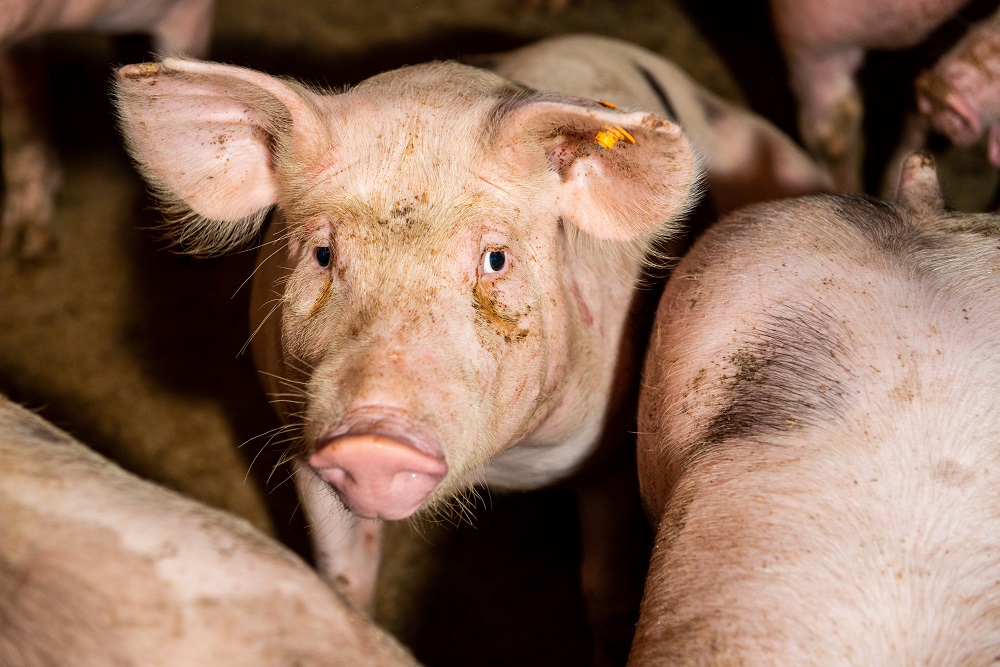IED: 10 reasons to return to the European Parliament's mandate on the scope of application for agricultural activities

The Industrial Emissions Directive (IED) is the EU’s main instrument for regulating pollutant emissions from industrial installations, achieving a high level of protection for human health and the environment by reducing harmful industrial emissions across the EU. It is nonsensical to include farms in this directive and treat them as if they were industries.
Since the Commission’s first proposal, farming and agricultural cooperatives groups in the EU, have drawn attention to the potential impacts of this directive on many family farms. And this concern remains prominent. As the text has been negotiated so far, the IED disproportionately affects pig farmers, egg producers and poultry farmers beyond broilers, placing an additional burden on mixed farms. It is therefore important that the European Parliament retains its original position on the scope of agricultural activities.
Agriculture is not an industrial sector, so it is not fair to consider it as such. The vast majority of poultry in the EU is produced on family farms that are far from being industrial facilities, often mixed with other livestock or crop activities. Barn and free-range eggs are mainly produced on small (<30,000 hens) and medium-sized farms with less than 100,000 laying hens. As such, treating livestock farming as an industrial activity, independently of the denomination used, is completely nonsensical and leads to misperceptions in the minds of citizens at a time when the gap between the urban and rural worlds is widening.
In addition, emissions will barely be reduced by such measures. According to the European Commission’s Impact Assessment, the provisionally agreed threshold will only be marginally effective in achieving its stated objective of a minimum reduction of greenhouse gas (GHG) emissions from agriculture of less than 3%. During the reference period from 2012 to 2013, 8,443 farms in the EU held an IED permit, with Spain alone accounting for 2,374, followed by Germany, the Netherlands, and Italy. In countries where rearing and fattening are traditionally carried out on the same farm, a farm with as few as 90 to 120 sows may fall within the scope, as the threshold for pig fatteners is considered unrealistic. In such cases, 90% of pig farms could be affected.
So, the percentage of farms covered is grossly underestimated, and the use of Livestock Units (LSU) is not advised. Livestock Units (LSU) is a standardised measure based on different animal species’ nutritional or feed requirements, allowing for the combination of livestock across species. Using “places“, as in the current IED text, instead of LSU would prevent discrimination within a sector. In addition, the Commission’s impact assessment advised against the use of the LSU classification unit: “Using Livestock Units directly as a threshold is complex and not advised, as it may be too different from the existing implementation of the IRPP BREF and national systems, causing additional administrative burden“.
Moreover, pig production has fallen over the last decade, but not in proportion to the pig population, leading to an increase in the average herd size. The same trend can be seen for poultry and egg farms. The disappearance of many small and medium-sized farms will exacerbate the ongoing concentration trend. Despite pig farming being highly specialised (e.g. producers focusing either on raising piglets or fattening pigs) in certain Member States, this is not the case everywhere.
This heterogeneity of the EU pig sector poses a unique challenge in family farm systems where pig rearing and fattening occur on the same farm (“farrow to finish”), and a larger number of animals on farms will be subjected to IED regulation. As a result, the unrealistic new scope (350 LSU) puts many small and medium farms at risk. On top of this, the text issued after the trilogue includes categories that are not legally compatible with existing legislation. The definition for the category “piglets ≤ 20 kg” is unclear as, by definition, a piglet means “pig from birth to weaning”. This must urgently be clarified, as it shows a lack of understanding concerning pig farming.
Also, the threshold of 280 LSU for poultry and egg farms has been set arbitrarily without considering the sector’s diversity, which further affects turkey farms. Organic production was excluded from the scope but only for pigs. Organic farming represents a mere 1% of pig production. With the pressure on egg farmers to transition away from cage production systems, it is counter-productive for EU institutions not to encourage free-range and organic systems by excluding them from the scope. Organic production holds real value for eggs, accounting for 7.1% of the current production systems (15.5% for free-range eggs). We see a real trend of consumers downgrading their standards when purchasing eggs. Repeatedly, we arrive at the same conclusion: it is crucial for political decision-makers to sincerely consider each species that the legislation will impact on the ground.
It is unfair towards organic poultry and eggs, and it is unfair for mixed farms as well. In many regions of the EU, it is common for one farmer to have poultry and pigs, or even monogastric species and ruminants, either as their traditional production or to easily balance possible market disruptions by compensating for the loss in one production with the other. As these farms will have to implement different operating rules, the burden on them will be relatively higher than on mono-production farms, as they may have to duplicate administrative procedures and apply more BAT.
The proposal to revise the IED contains no provision to ensure that requirements imposed on EU producers are reciprocally applied to products imported from third countries: this is a serious problem for our EU producers. For example, poultry meat and eggs imported mainly from Brazil, Thailand and Ukraine are, on average, produced on much larger farms than EU farms and in countries with no or limited environmental legislation.